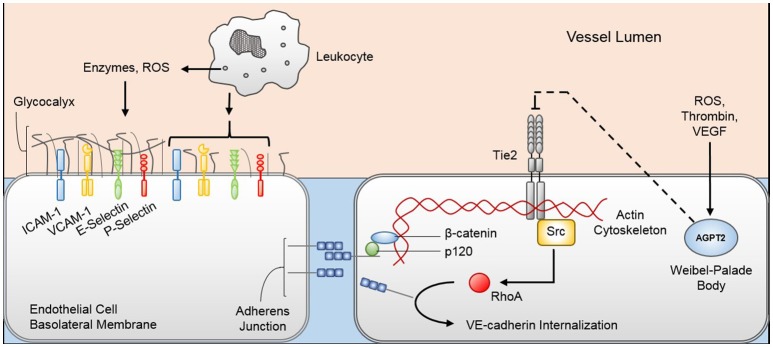Figure 2.
Pathophysiologic mechanisms of viral-induced endotheliopathy. Innate immune system activation during viral sepsis precipitates leukocyte degranulation and release of enzymes and reactive oxygen species (ROS) that degrade the endothelial glycocalyx. Denuded endothelial glycocalyx exposes cellular adhesion molecules (e.g., ICAM-1, VCAM-1, E-selectin, P-selectin) that increase the margination and activation of leukocytes, further promoting the inflammatory response. Additionally, inflammatory mediators, namely thrombin, ROS, and vascular endothelial growth factor (VEGF), promote Weibel-Palade body exocytosis, releasing angiopoietin-2 (Agpt-2) into the circulation. Agpt-2 antagonizes the endothelial cell Tie2 receptor, allowing the Src-mediated RhoA enzyme to reconfigure the endothelial cell cytoskeleton and promote VE-cadherin internalization from the adherens junction. Loss of glycocalyx and adherens junction integrity permits increased trans-cellular protein and fluid movement from the vascular lumen to the interstitium. ICAM-1, intercellular adhesion molecule 1; VCAM-1, vascular cell adhesion molecule 1.

